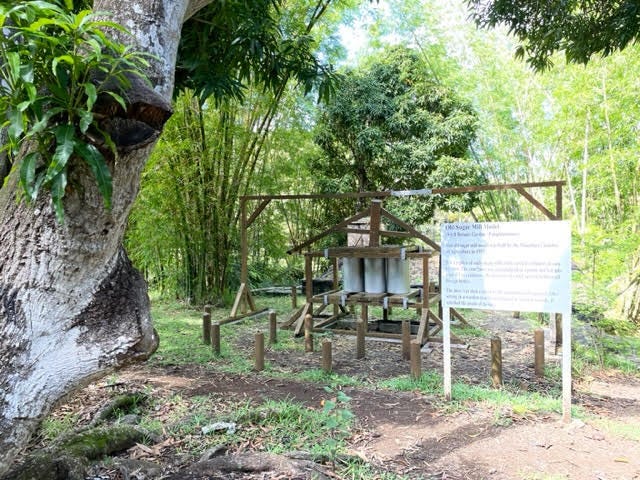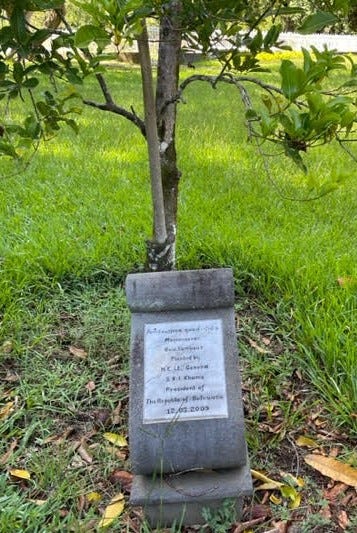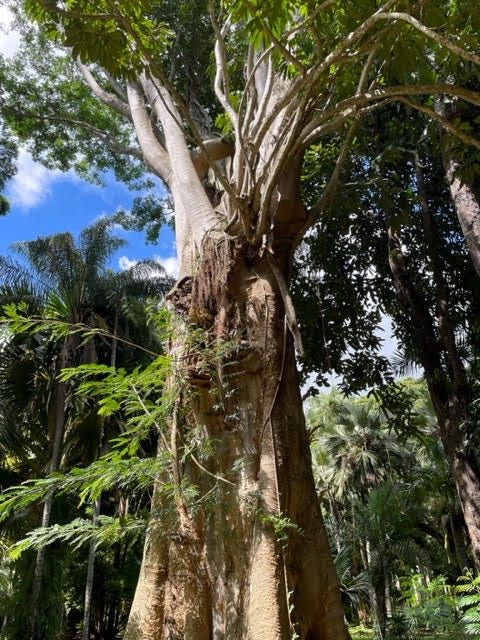Today was a long day, and it was very hot out. I’m a little concerned about how I’ll hold up when we get to some of the African countries but we soldier on. And at least I know I’ll sleep well tonight.
As the day began, we sailed into Port-Louis, the capital of Mauritius. There were several container ships outside the harbor.
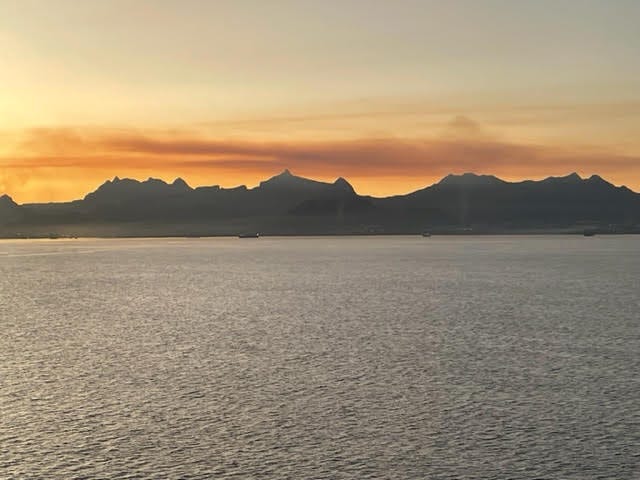
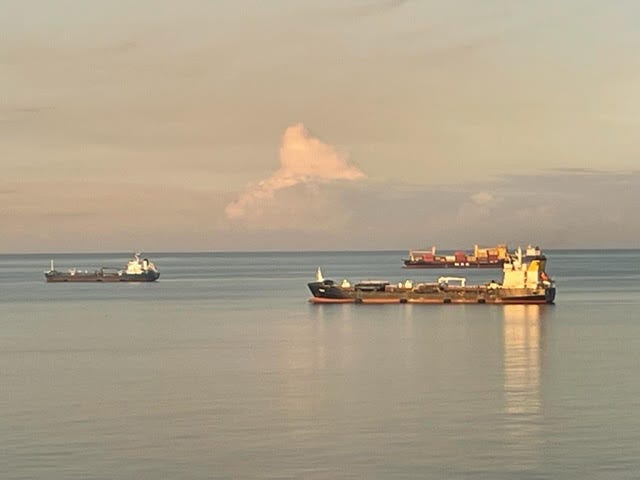
Basics: The country has about 1.2 million people, of which 150,000 live in Port-Louis. Mauritius gained its independence from the UK in 1968 and the people are very proud of their country, as they should be. English is the official language, but everyone speaks a Creole dialect and French as well. It is a very diverse country, and they are proud of how well they get along. Within the populace, you find 52% Hindis, 27% Creole Catholics, 17% Moslem, and small groups of Chinese, French, and others. Tourism is the primary industry, so COVID was very hard on them. The second industry is sugar cane; the third is textiles. Mauritius was the home of the dodo and giant tortoises, both of which are extinct now. Lots of souvenirs—I mean lots—depict the dodo.
My tour began near the town of Pamplemousses, so named because there used to be a grapefruit plantation there. Grapefruit had been brought in to fight scurvy. We went to the Sir Seewoosagur Ramgoodlam Botanic Garden, or SSRBG. Sir SR was first Prime Minister of the independent Mauritius; the airport and other landmarks are also named for him. We spent a couple of hours on a guided walk through the garden, and saw many remarkable trees and plants.
The first notable thing we saw was a model of an old sugar mill. Oxen would walk around to crush the sugar cane under the 3 cylinders. The juice was then processed to make sugar. Today, of course, modern equipment is used.
The first tree the guide pointed out was a mango. You can see lots of fruit up high. It’s currently the end of the mango season. We also saw these amazing trees that were blown sideways but not killed by a cyclone, so they just adopted and started to grow vertically again once the storm passed.

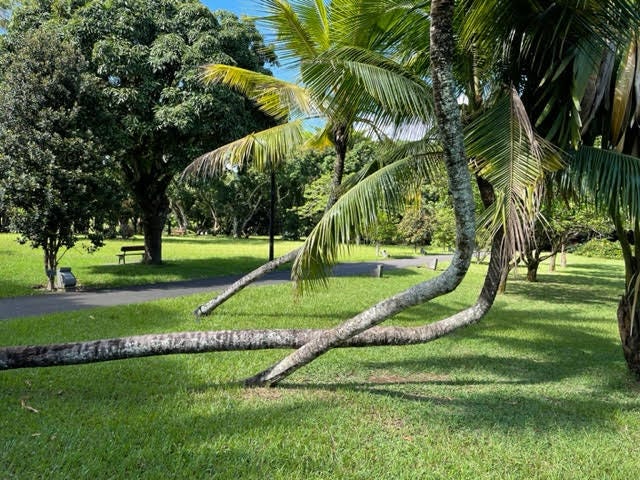
When dignitaries visit the country, they often come to the garden and plant a tree. The government erects a plaque telling who visited and when.
This stately home is called the Chateau de Mon Plaisir. Built in 1823, the multiple doors were used for ventilation in the heat. It is now used for ceremonial occasions.
We saw many really interesting trees. These include a vaqua plant, with its roots above ground; a giant ficus; a bottle tree being pointed out by our guide; and a sausage tree (take a look at the fruit hanging in the tree). The last two are a bay pine and an alligator palm.
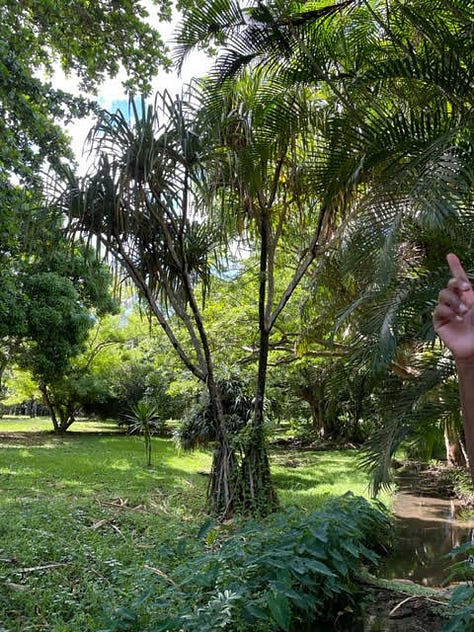
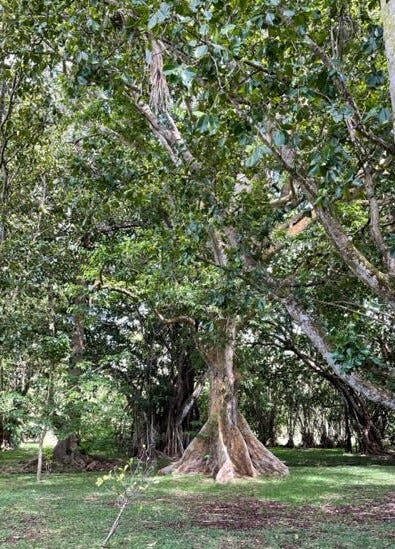
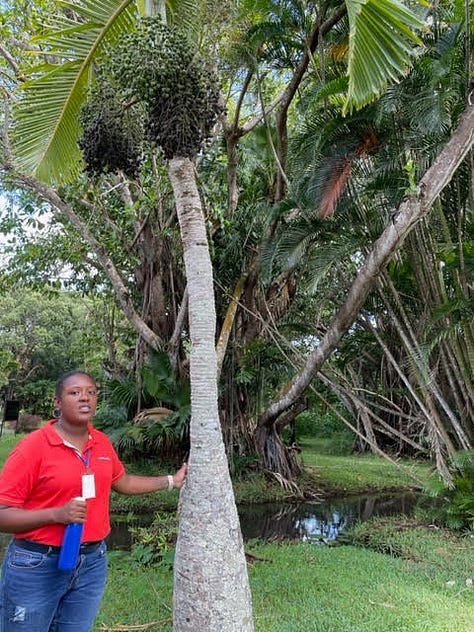
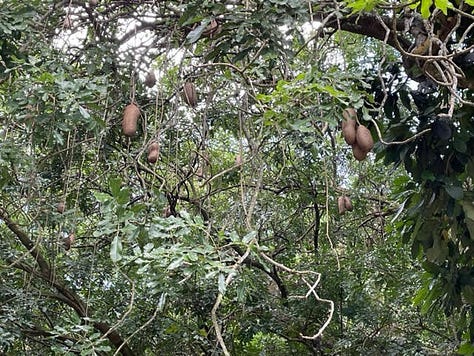
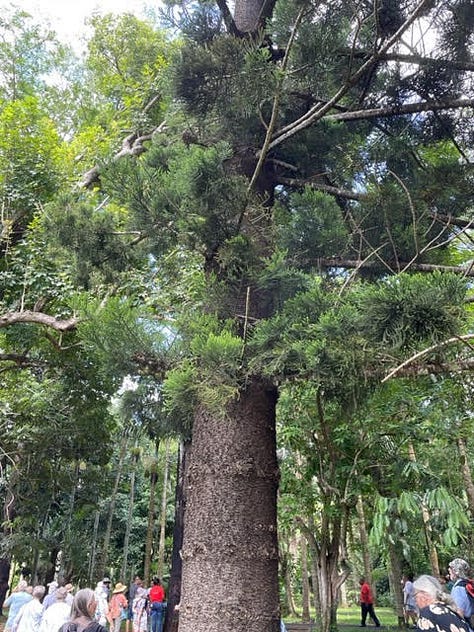
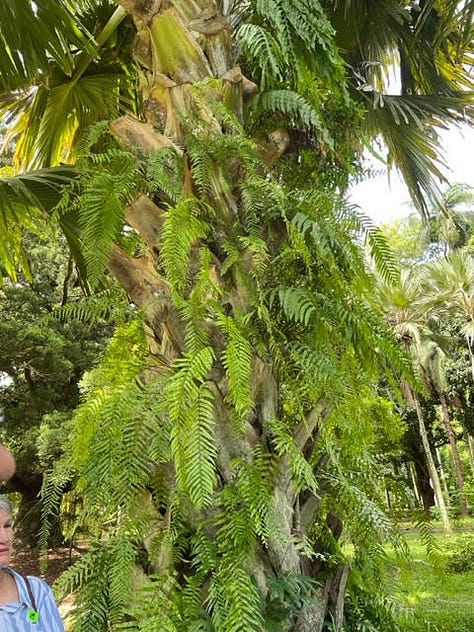
The lotus pond is a big attraction, as are the giant water lilies. The first one shows a duck swimming among the leaves. Next you can see one white blossom; the blossoms only last for 2 days. In among the water lilies are several of this strange kind of spiky plant.

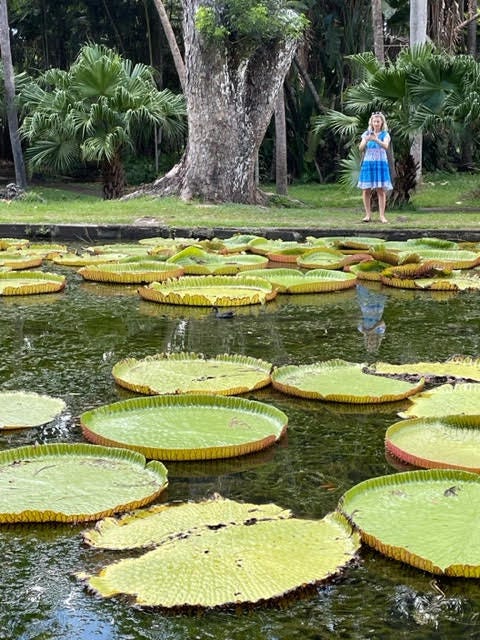
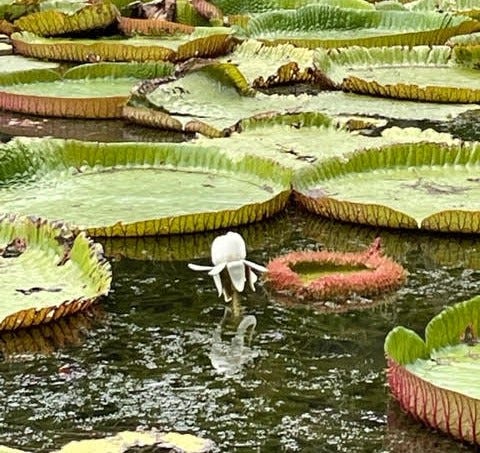

This tree has 3 separate plants growing in it. If you look closely, you can see the lower leaves are different from the higher ones.



